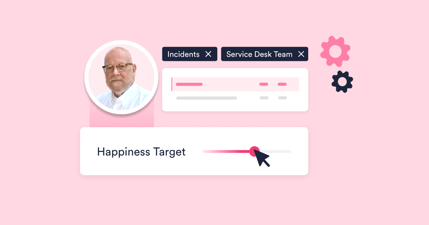In IT, hopefully, it’s not a gross generalization to state that we’re all good at the technology part. Ideally, the process part, too. But what about the people part? In particular, handling the impact on people when the process and technology parts change. For example, how many organizations will simply add new generative artificial intelligence (GenAI) capabilities to their IT service desk because they are now available in the corporate IT service management (ITSM) tool without considering the people impact?
Understanding what organizational change management (OCM) is and how it helps is invaluable to IT professionals. Whether employed when introducing new technology or changing ITSM processes to improve experiences, it recognizes that most of our IT changes include people change. Please keep reading to find out more.
An OCM 101
An easy definition is provided within the ITIL 4 body of service management best practice content. This describes OCM as:
“The practice of ensuring that changes in an organization are smoothly and successfully implemented and that lasting benefits are achieved by managing the human aspects of the changes.”
Source: Axelos, “ITIL Foundation: ITIL 4 Edition”
OCM offers various tools and techniques related to people and change that help change-makers to:
- Improve stakeholder inclusion and alignment
- Provide effective communications
- Increase the probability of change adoption
- Enhance risk management
- Deliver better employee experiences.
It’s very much focused on preventing people – either intentionally or unintentionally – from being a barrier to change success.
OCM guidance
There are many sources of OCM guidance. However, for an IT professional schooled in ITIL (and perhaps using ITIL best practices within their organization), the ITIL 4 OCM Practice Guide is a good reference. It shares five OCM principles for successful organizational change:
- Clear and relevant objectives
- Strong and committed leadership
- Willing and prepared participants
- Demonstrated value
- Sustained improvement.
These OCM principles are essential to organizational change activities and success. In particular, for “selling the change” and “preparing people for change.”
Selling the change
Selling any form of change to employees can be difficult. It requires clear change objectives and committed leadership for those affected to understand the impact of the proposed change on them and their work.
It’s unlikely that employee buy-in will simply happen. Instead, there’ll likely be resistance to change, which is where OCM helps. Messaging is important – both the content and the employed channels – and employees must understand the “What’s in it for me?” for them to buy into any proposed change.
Preparing people for change
In addition to the right communications (that help with the “What’s in it for me?”) and the backing of senior leadership, there’s also a need to remove change obstacles. A critical OCM activity here is education and any training required to prepare people for the change.
Potential employee resistance should be managed as a risk, with mitigating steps to reduce the potential. Activities include involving people in decision-making, targeted communications addressing key employee concerns, and demonstrating change benefits through quick wins.
How OCM and ITXM help each other
In an earlier HappySignals blog, Sakari Kyrö wrote about the importance of end-user experience data (collected through IT experience management (ITXM)) to GenAI adoption. He stated that knowing what matters most to end-users or whether changes are making the expected improvements is important. However, so is ensuring that your people aren’t resistant to the introduction of new technologies and new ways of working. This is where OCM plays its part.
It’s essential to appreciate that OCM and ITXM best practices aren’t mutually exclusive. You might have noticed that the fifth bullet in the OCM 101 section was “Deliver better employee experiences.” The two disciplines have a similar focus – to improve things for employees, including during periods of change.
OCM best practices offer tools and techniques that help to improve change success, including employee experiences. Meanwhile, ITXM offers data, insights, and actions that help with OCM. Together, they help ensure that people buy into any corporate change and that the change delivers “on its promises.”
GenAI introduction as an example
GenAI adoption can be used as an example to express the connectedness of OCM and ITXM.
Pre-change the OCM tools and techniques facilitate stakeholder engagement, with stakeholder inputs captured and concerns addressed. ITXM capabilities capture the experience “status quo” and provide insights into potential improvements, including where the priorities for GenAI adoption should be. ITXM can also focus on understanding how the proposed change and the quality of OCM efforts affect employees pre-change.
The ITXM data and insights can also influence the change communication plan. These communications keep stakeholders informed about GenAI change benefits, risks, and impact, with the ITXM insight allowing the communications (and associated actions) to focus on what matters most to employees. For example, alleviating employee anxieties related to GenAI’s impact on job security or identifying training needs.
ITXM also enables a key OCM need – success measurement. ITXM capabilities can measure how well new GenAI capabilities affect employee experiences. For example, it might be that even with the use of OCM tools and techniques, the experience of employees is adversely affected post-change. Based on this data and insight, improvement areas can be identified, and corrective action can be taken as necessary.
Ultimately, OCM is important to ITXM, and ITXM is important to OCM. Please get in touch to learn more about the two disciplines working together to improve operations, experiences, and outcomes.




